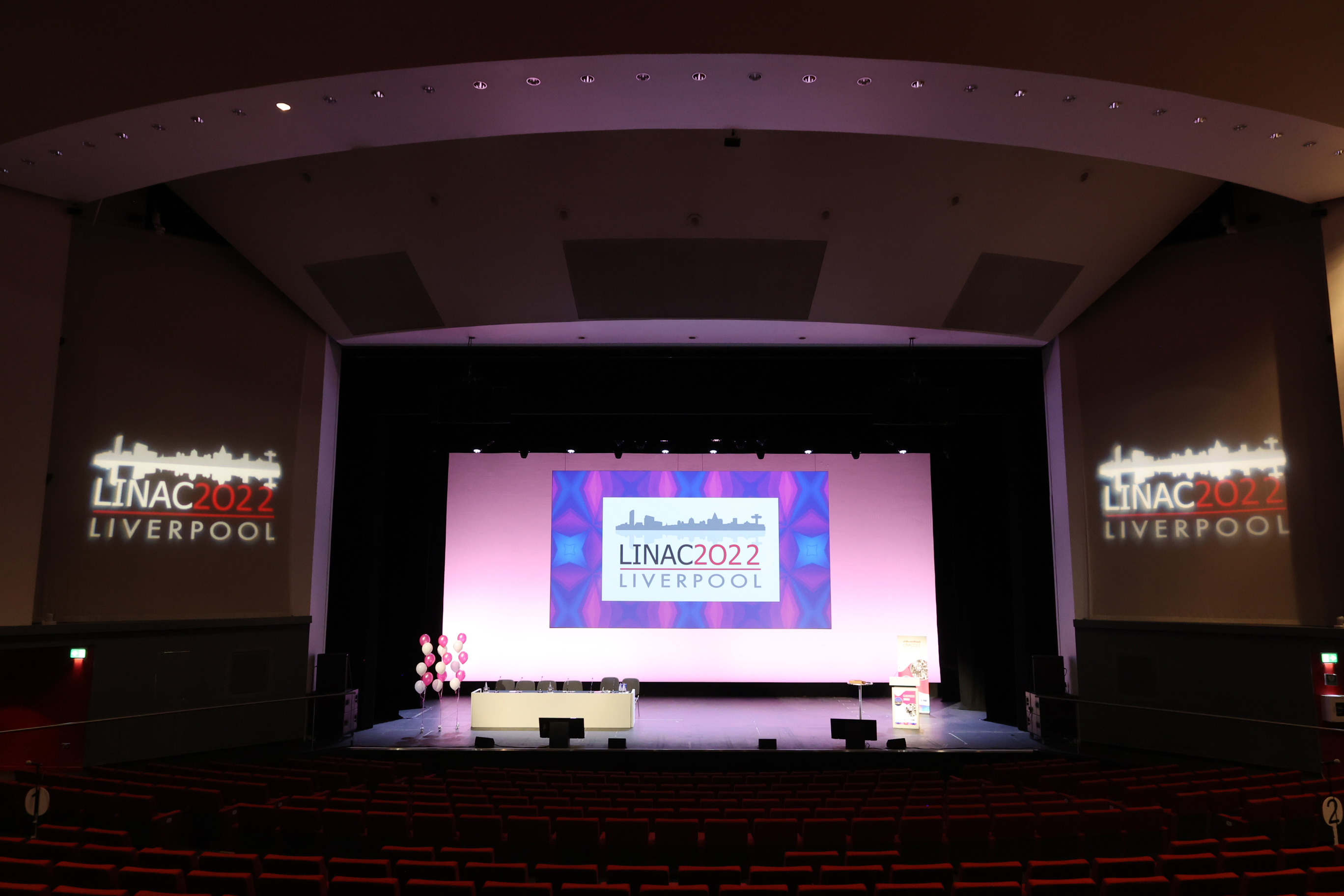LINAC2022, the first LINAC conference being held in-person since Beijing in 2018 was hosted by the Science and Technology Facilities Council (STFC), the Cockcroft Institute (CI) and the John Adams Institute (JAI) at the Arena and Convention Centre (ACC) in Liverpool, over the period of 28th August to 2nd September 2022. This in fact being the very first time that a LINAC conference has ever been held in the UK in its 60+ year history.
The event welcomed almost 350 accelerator specialist delegates from all over the world, who were updated on the impactful developments for linear accelerators which have occurred since the ‘Virtual’ LINAC2020 conference.

An implicit focus for LINAC2022 has been to include a variety of ED&I (Equality, Diversity and Inclusion) processes in order to try and breakdown any subconscious barriers for inclusion, ranging from the branding used, the provision of free childcare for delegates and using inclusive language in all communication. The conference delegate and speaker gender balance both reached a significantly improved level of 20%. 70% of travel grants were awarded to PhD students who identify as female.
The conference was chaired by Peter McIntosh (STFC Daresbury Laboratory), with Graeme Burt (Lancaster University) as Scientific Programme Committee (SPC) Chair and Carsten P Welsch (University of Liverpool) as the Local Organising Committee (LOC) Chair.
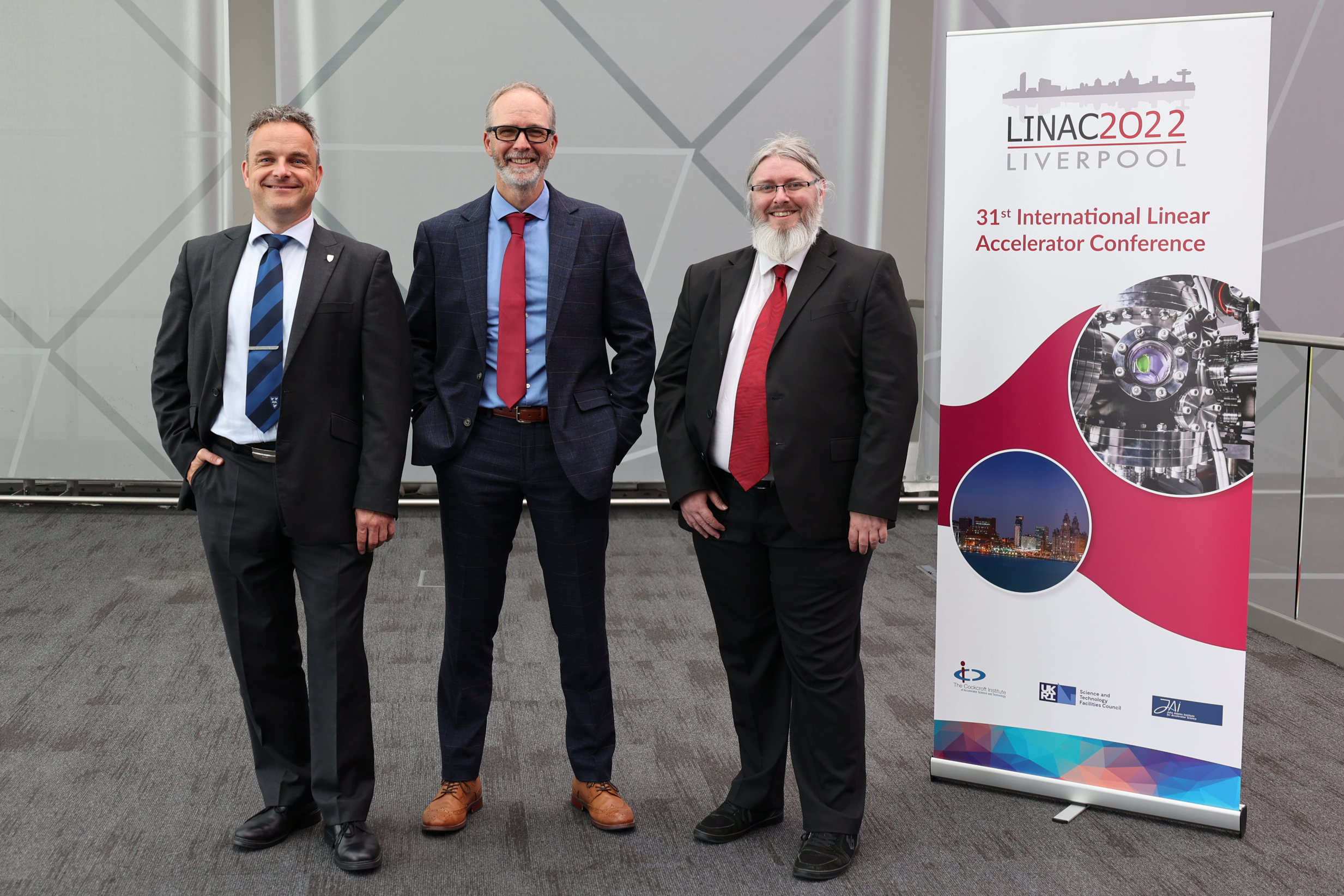
As an inherent ability to help deal with remnant problems experienced globally from the COVID-19 pandemic, the conference also provided remote participation via the LINAC2022 mobile app for all registered delegates, being a first ever inclusion for the LINAC conference series. This was smoothly integrated into the event by Daresbury laboratory’s experienced Media Services team.
As well as the introductory talk from Alan Letchford (STFC) on ‘The ISIS Linac Upgrade/FETs’ and the closing talk by Jonathan Farr (AVO) on ‘The Future of Medical Linacs’, a number of highlight topics were presented at this year’s conference, including:
- Commissioning results from FRIB, LCLS-II, SPIRAL-2, RAON, IFMIF, LEAF and SARAF.
- Development updates from EIC, PIP-II, ESS, FACET-II, AWAKE, ILC, CSNS-II, ISAC and SwissFEL.
Graeme Burt said: “The LINAC conference has a long history of excellent technical talks over a wide variety of linac technologies, and LINAC2022 has continued this tradition. The scientific programme committee had to change the way it operated in order to create such a strong programme without face-to-face meetings and I thank everyone involved for doing such an amazing job”
With a student poster adjudication process conducted by the SPC on the Sunday afternoon, three students were judged to be awarded prizes, sponsored by the Institute of Physics and Institution of Engineering and Technology. These were announced by the SPC Chair on the Thursday. The prize winners are:
- 1st: Sonja Jaster-Merz (DESY)
- First Studies of 5D Phase-Space Tomography of Electron Beams at ARES
- 2nd: Yuga Nakazawa (Ibaraki University)
- High Power Test of an APF IH-DTL Prototype for the Muon Linac
- 3rd: Catarina Filipa Da Palma Serafim (CERN)
- Microscopy Investigation on Different Materials After Pulsed High Field Conditioning and Low Energy H- Irradiation
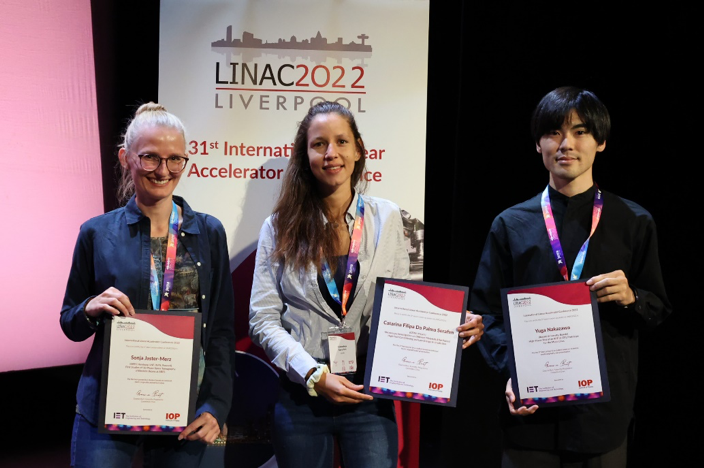
On the Tuesday evening, a Women in Science and Engineering (WISE) session was conducted which comprised the eminent Dr Averil MacDonald OBE, who gave the keynote address for the topic of Reclaiming the Authority Gap. In addition, an illustrious panel discussed with the audience possible solutions to dealing with this problem in scientific and educational organisations. Anna Shabalina (STFC Daresbury Laboratory) and Steve Jamison (Lancaster University), together with Tessa Charles (University of Liverpool) who was also in charge of the overall EDI aspects of the conference, deserve significant credit for the coordination and delivery of this impactful session which received extensive acknowledgement from the LINAC2022 participants. It is hoped that the recent addition of a WISE session to both the Virtual LINAC2020 and this LINAC2022 can be maintained for future conferences.
On the Wednesday afternoon, as its historical tradition dictates, the LINAC2022 delegates were provided an opportunity to network and engage in more of a social environment via a series of excursions which included; a Beatles experience, a guided tour of the historical city of Chester, a visit to the industrial revolution site of Quarry Bank Mill, and a hike up Moel Famau in the Clywdian Range. On the Thursday night, delegates were hosted at Liverpool St George’s Hall for an evening banquet.
The LINAC2022 conference in Liverpool provided delegates with an effective ability to engage and network with the 20 exhibitors who were available to showcase their capabilities, including the almost 250 posters presented over the 5 days of the conference, using the integrated Hall-2 configuration facilitated by the Liverpool ACC conferencing venue.
The Joint Accelerator Conferences Website (JACoW) editing team, led by Rob Apsimon (Lancaster University), worked tirelessly throughout the week to process all of the submitted papers, posters and presentations to prepare the pre-publication for reference to all delegates, which can be viewed here.
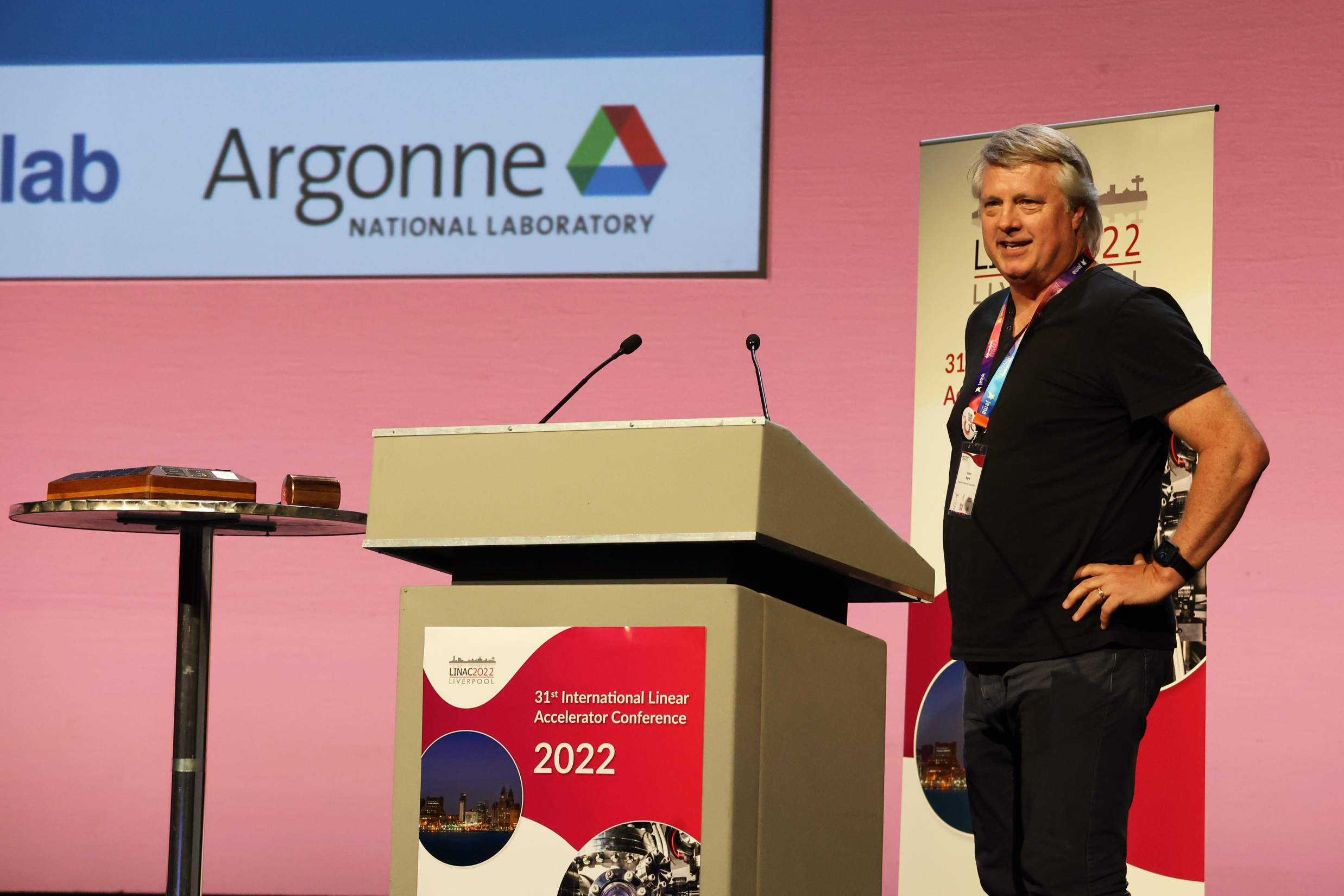
The closing of the LINAC2022 conference took place at the ACC on Friday before lunch, with each of the three conference Chairs providing a recognition and thank you for all contributing teams, exhibitors and sponsors. The conference was then formally closed by the Conference Chair Peter McIntosh, officially handing over the legacy Linac ‘Gavel and Block’ to the incoming conference chair John Byrd (Argonne National Laboratory), for the next LINAC conference which is to be held in Chicago in 2024.
During the final afternoon of the conference week, many delegates used the opportunity to visit STFC Daresbury Laboratory to view project activities including CLARA, ESS high beta cavities, HL-LHC crab cavity cryomodules, PIP-II cryomodules, LBNF/DUNE APA detectors, Engineering Technology Centre, the Cockcroft Institute’s laboratories and a suite of accelerator preparation laboratories.
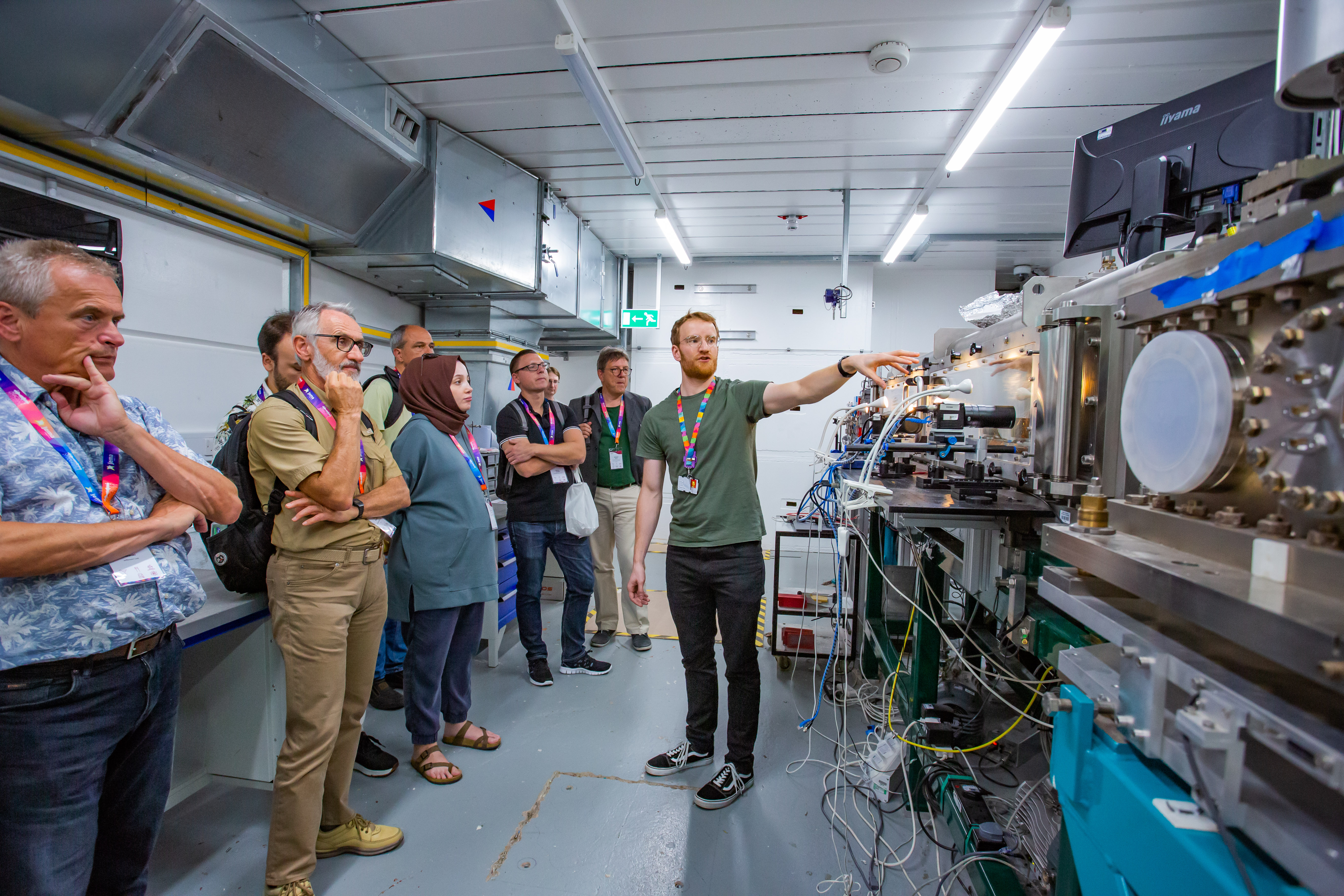
Peter McIntosh concluded: “I am incredibly proud for the UK to have re-launched the International LINAC conference series with LINAC2022 in Liverpool, after such a long period of absence for the global accelerator community. For the STFC Daresbury Laboratory, Cockcroft Institute and John Adams Institute teams, this conference delivery has been an amazing achievement, very well done to everyone involved!”

